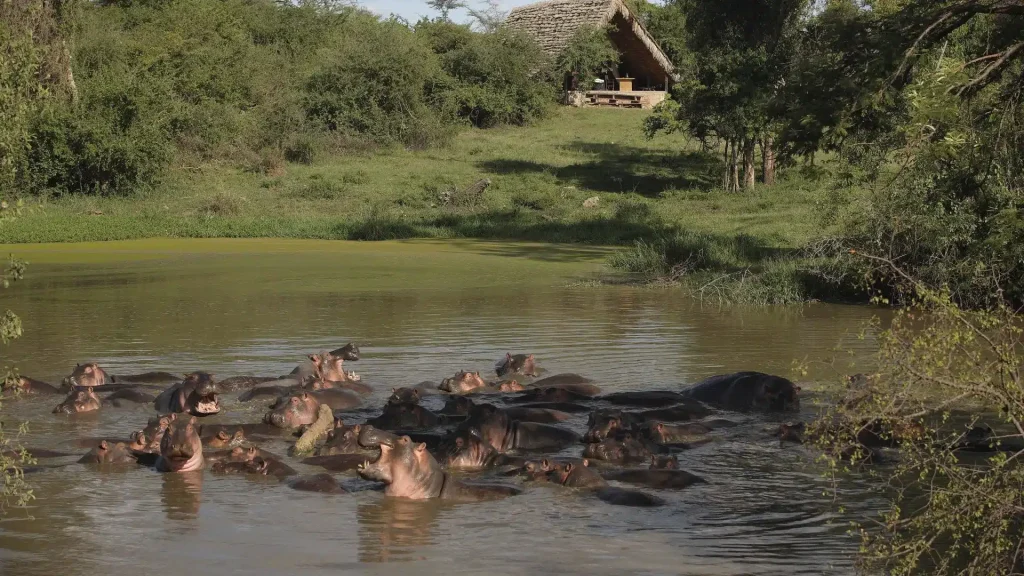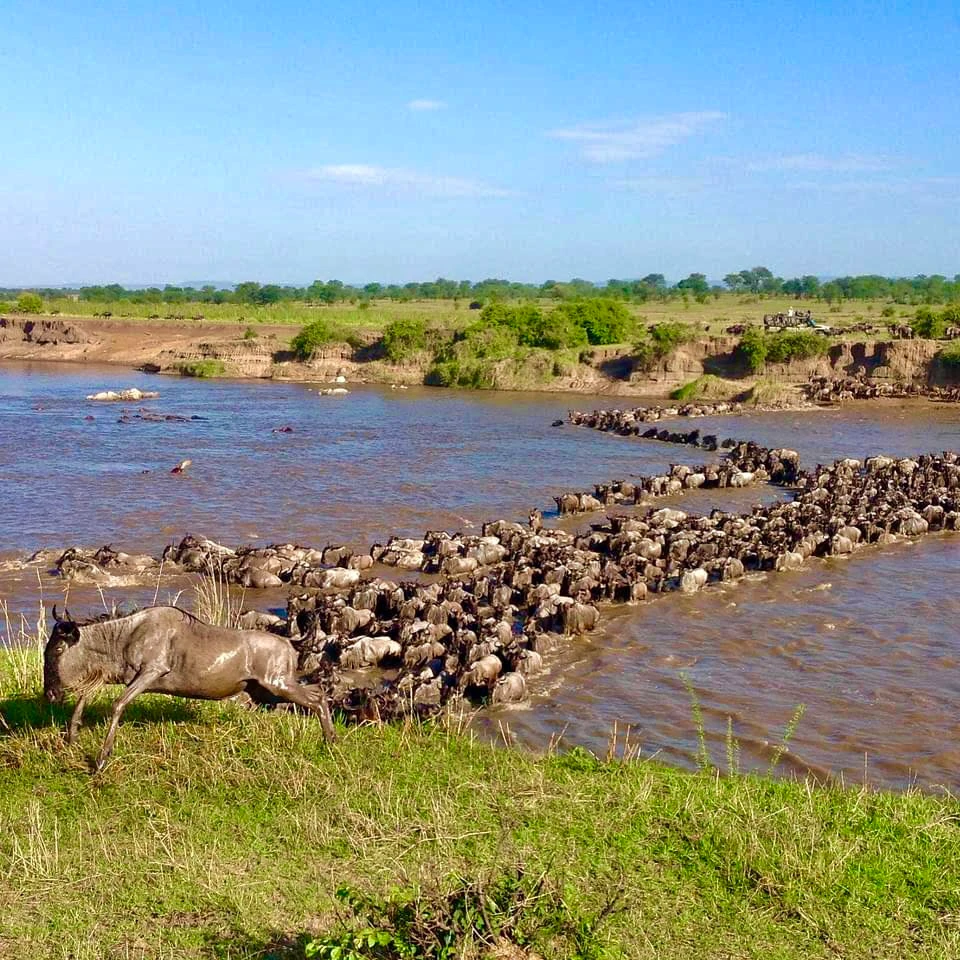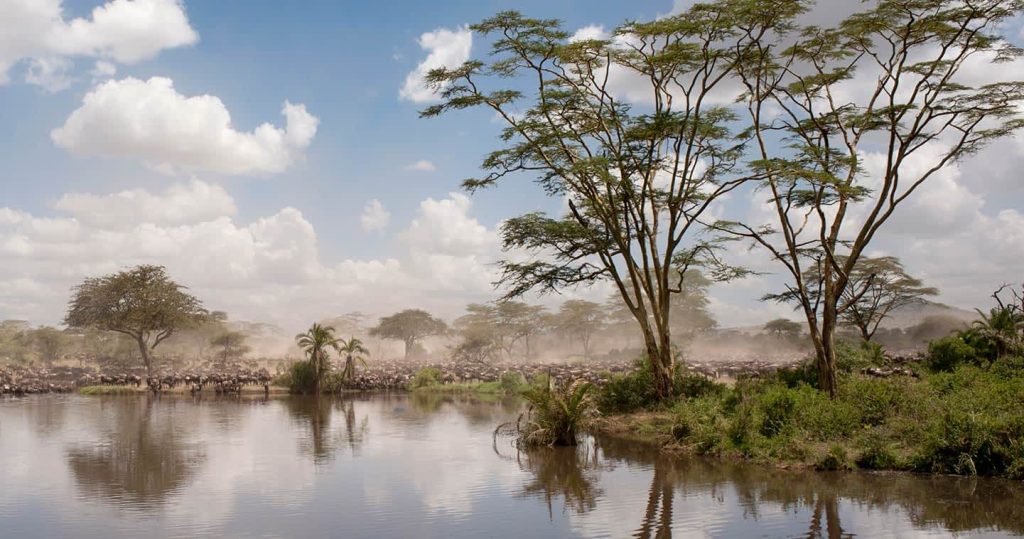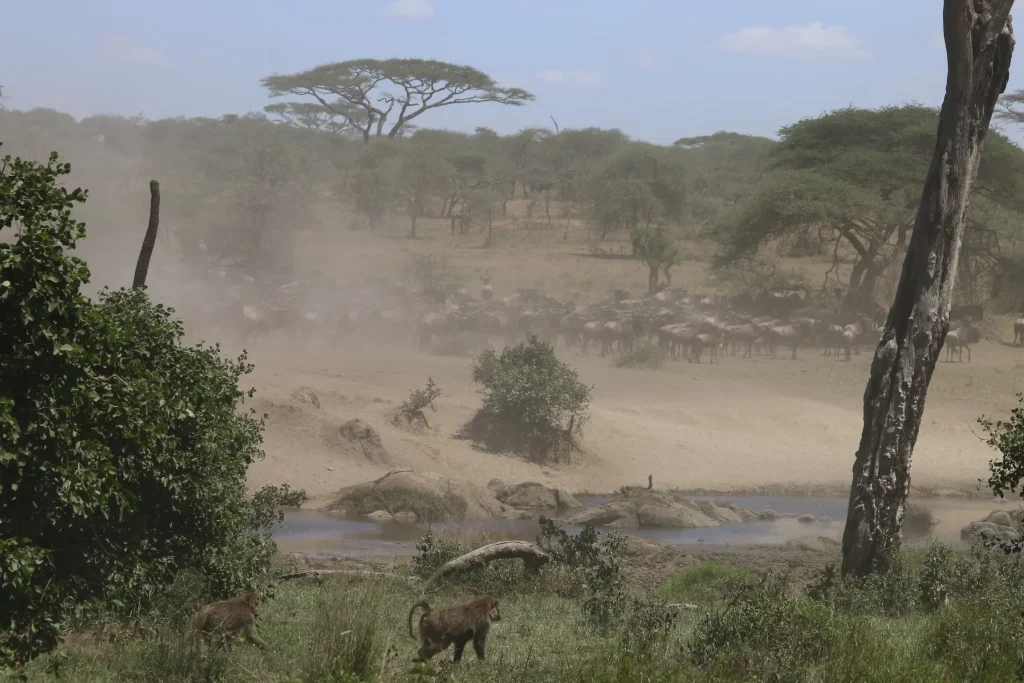Flowing Through the Wild: The Grumeti River and Its Wildlife




Grumeti River
The Grumeti River, winding through Tanzania’s Serengeti National Park, is one of the most dynamic natural waterways in East Africa, famous for both its scenic beauty and its pivotal role in the life of the region’s wildlife. Located in the northwestern Serengeti, the Grumeti River is best known as a lifeline for countless species and a prime location for witnessing spectacular wildlife encounters. Here’s everything you need to know about the Grumeti River and the unforgettable wildlife experiences it offers.
The Grumeti River and the Great Migration
- A Crucial Stage in the Great Migration Each year, the Grumeti River plays a vital role in the Great Migration, one of nature’s most impressive phenomena, where over a million wildebeest, zebras, and other animals make their way through the Serengeti in search of fresh grazing lands. From May to July, this awe-inspiring event brings herds of animals to the Grumeti River as they traverse the region. The river’s waters provide a critical drinking source for these migrating animals and offer travelers a front-row seat to one of nature’s most breathtaking spectacles.
- Dramatic River Crossings The Grumeti River is particularly known for its dramatic river crossings during the migration. As thousands of animals attempt to cross the river, the strong currents and lurking predators make this one of the most high-stakes points of their journey. Tourists from around the world visit to witness the tension-filled crossings, where wildebeest leap into the water to avoid the Nile crocodiles that lie in wait, making it a thrilling, once-in-a-lifetime experience for those lucky enough to see it.
- The River’s Crocodile Population One of the Grumeti River’s most iconic residents is the Nile crocodile, among the largest and most ancient reptile species on Earth. These massive crocodiles have adapted to their surroundings over centuries and are particularly well-suited to this river environment. During the migration, the crocodiles play a key role in the ecosystem by targeting weaker or injured animals, which supports the health and balance of the wildebeest population. Observing these powerful reptiles in their natural habitat as they wait for prey provides insight into the raw, untamed beauty of the African wild.
Wildlife Diversity Along the Grumeti River
- Large Mammals and Predators In addition to wildebeest and crocodiles, the Grumeti River is a haven for a range of other wildlife species. Herds of zebras, gazelles, and impalas frequent the riverbanks, drawn by the water and vegetation. Predators, such as lions and hyenas, also gather in the area, attracted by the abundance of prey during the migration period. This convergence of animals creates incredible opportunities for observing the circle of life as herbivores, carnivores, and scavengers interact in a delicate balance.
- Birdlife and Aquatic Species The Grumeti River is a paradise for bird enthusiasts as well. The riverbanks and surrounding forests attract numerous bird species, including African fish eagles, kingfishers, storks, and herons. These birds thrive in the river’s lush environment, providing unique birdwatching experiences for visitors. The river is also home to various aquatic species, such as fish and amphibians, which serve as a food source for both birds and reptiles.
- Hippos and Their River Habitats Hippopotamuses, or hippos, are another common sight along the Grumeti River. Spending most of their time submerged to stay cool, hippos are often seen lounging in the water, with only their eyes, nostrils, and ears visible. These massive creatures play an essential role in the ecosystem, helping to shape the riverbeds by clearing vegetation and creating habitats that benefit other species. Observing hippos in their social groups, or “bloats,” is a fascinating experience as they interact with each other through vocalizations and physical displays.
Best Time to Visit the Grumeti River
The dry season from June to October is generally the best time to visit the Grumeti River for wildlife viewing, particularly for witnessing the Great Migration. During these months, the river becomes a central attraction as wildlife congregates along its banks. The dry season also makes it easier to see animals at the river, as vegetation is less dense and wildlife is concentrated around water sources. For those hoping to catch a glimpse of the dramatic river crossings, visiting between May and July is ideal, as this is when the migration typically reaches the Grumeti.
How to Experience the Grumeti River and Its Wildlife
- Guided Game Drives One of the best ways to explore the Grumeti River and its surroundings is through guided game drives. Knowledgeable guides can lead you to prime viewing locations along the river, enhancing the experience with their insights into animal behavior and ecology. The drives provide close-up views of the river, the wildlife interactions, and the unique habitats that make this area so special.
- Walking Safaris For a more immersive experience, walking safaris are available in some areas along the Grumeti River. Accompanied by an experienced guide, you’ll have the chance to explore the riverbanks on foot, gaining a unique perspective on the environment and its inhabitants. Walking safaris offer a more intimate experience of the ecosystem, allowing you to observe smaller details such as animal tracks, plant life, and bird species up close.
- Cultural Tours with Local Communities Exploring the Grumeti region also offers opportunities to engage with local communities, such as the nearby Maasai and other indigenous groups. Many lodges and camps offer cultural tours where you can learn about the customs, traditions, and daily lives of people who have a deep connection to this land. These tours add an enriching cultural layer to the experience, providing insight into the region’s history and the symbiotic relationship between people and wildlife.
- Photographic Safaris The Grumeti River’s dramatic landscapes and abundance of wildlife make it a fantastic destination for photography. Whether you’re capturing the powerful river crossings, the unique species along the banks, or the beautiful Tanzanian landscapes, the Grumeti region is a photographer’s paradise. Many lodges offer specialized photographic safari packages that provide guided tours and tips for capturing the perfect shot.
Conservation and the Grumeti River
The Grumeti River and its wildlife-rich environment face challenges from climate change, human encroachment, and poaching. Conservation efforts led by organizations such as the Grumeti Fund have been critical in preserving this unique ecosystem. The Grumeti Fund, in partnership with the Tanzanian government, works to protect wildlife populations, combat poaching, and restore natural habitats. By visiting the Grumeti region responsibly, travelers can support these conservation efforts and contribute to the long-term preservation of this extraordinary wildlife area.
Accommodations Near the Grumeti River
Numerous lodges and camps are located near the Grumeti River, offering visitors a range of accommodation options, from luxurious tented camps to eco-friendly lodges. Staying at a nearby camp allows visitors to experience the Grumeti area in comfort, often with amenities like private decks, panoramic views, and even plunge pools. Many accommodations also offer guided safaris, night drives, and other activities to help you make the most of your time by the Grumeti River.
Conclusion: The Wild Beauty of the Grumeti River
The Grumeti River is much more than a river; it’s an ecosystem that supports a vast diversity of wildlife and serves as a natural theater for some of the most captivating wildlife events in Africa. From the thrill of the Great Migration and the powerful Nile crocodiles to the resident hippos, birdlife, and majestic mammals that roam its banks, the Grumeti River is a place of raw beauty and remarkable biodiversity. Exploring this river and its surroundings provides an unforgettable experience for anyone looking to connect deeply with nature and witness the extraordinary wildlife

One Comment